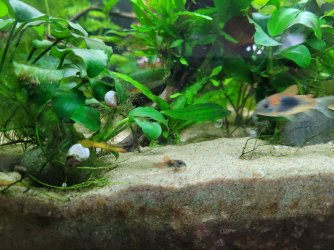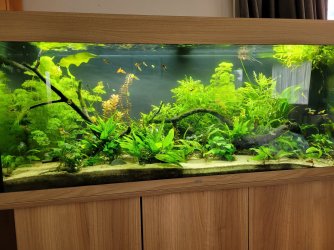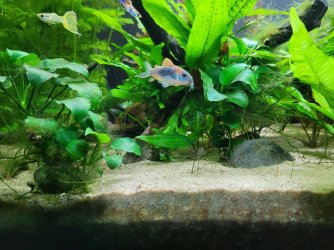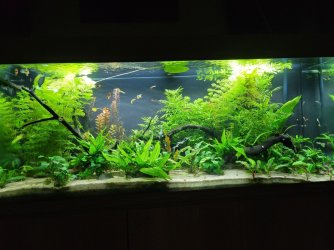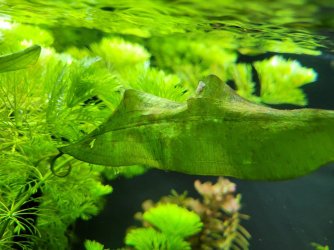I found more Cory eggs last night, i accidently killed some as i was starting to push the suction cap back onto the glass and noticed some while stuff coming out before i stopped.
So to try and keep more alive i moved them into my 150ltr tank as it only has a few rasboras in it right now.
I went and checked on them 10 mins later and half the eggs were missing, i had a slight freak out thinking that Rasboras had got them even though i never see them at the lower half of the tank before i saw 2 eggs hatching, im guessing there might have been a 1 degree diff in water temp which encouraged them to hatch, either that or my timing was perfect for moving them.
There a bit more mulm in this tank so im hoping thats going to help feed them while they are still so young as i have no way of trying to direct feed them right now. Anyway I saw lots of little wrigglers by the time the lights went off so im pretty happy with that. I think moving to 2 feeds a day has encouraged the cories to spawn more.
I had started setting up a 60ltr tank as i wanted to get some cherry barbs and use it as a spawning/grow out tank but i didnt have the heater setup for it yet so will see how the cories go in here. Its got alot of plants but not as dense as the 240ltr tank.
Also for future reference does anyone know if Planariidae eat fish eggs? I saw a couple of them on the suction cup after most of the eggs had hatched.
Family Planariidae
Danger: Harmless.
How it gets into your tank: Plants, Water, Live food.
Size: Generally ≤ 4mm
Planaria are non-parasitic [acronym="The flatworms, known in scientific literature as Platyhelminthes are a phylum of relatively simple bilaterian, unsegmented, soft-bodied invertebrate animals."]flatworms[/acronym] often seen in new tanks. Large numbers of them are indicative of overfeeding or decaying animal matter being in the tank. Often seen crawling on glass.

